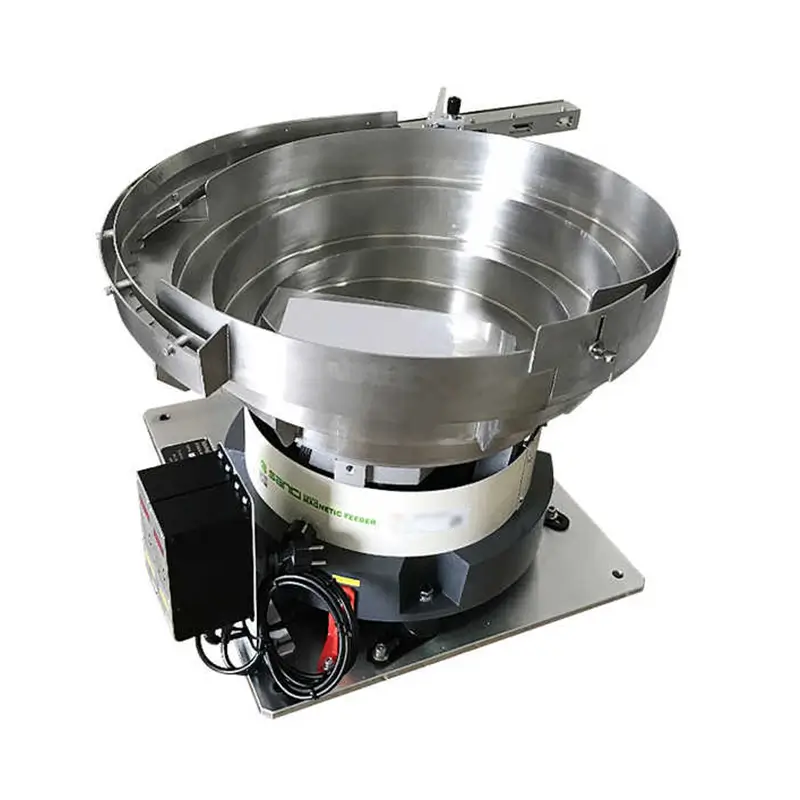- Introduction
- Brief overview of centrifugal bowl feeders
- Importance in automation
- What is a Centrifugal Bowl Feeder?
- Definition
- Key components of the feeder
- How Do Centrifugal Bowl Feeders Work?
- The working principle
- The role of the hopper
- Benefits of Using a Centrifugal Bowl Feeder
- Increased efficiency and speed
- Cost-effectiveness and reliability
- Versatility across industries
- Applications of Centrifugal Bowl Feeders
- Automotive manufacturing
- Medical and pharmaceutical industries
- Electronics and plastics industries
- Centrifugal Bowl Feeders vs. Vibratory Feeders
- Key differences in performance
- When to choose centrifugal over vibratory feeders
- Choosing the Right Centrifugal Bowl Feeder for Your Industry
- Factors to consider before buying
- Common mistakes to avoid
- Conclusion
- Is a centrifugal bowl feeder right for your business?
Introduction
Are you looking for a solution that boosts the speed, efficiency, and precision of your production line? A centrifugal bowl feeder could be the answer. Industries ranging from automotive manufacturing to medical equipment and electronics widely use these feeders to automate the sorting and feeding of parts at high speeds. Let’s explore what centrifugal bowl feeders are, how they work, and why they may be exactly what your business needs.
What is a Centrifugal Bowl Feeder?
Centrifugal bowl feeders are devices used in automation to orient and feed small parts to subsequent machinery. It uses centrifugal force to separate, sort, and direct parts into the correct orientation, ensuring smooth, continuous movement in high-speed production lines. Unlike vibratory feeders, centrifugal bowl feeders can handle a variety of part shapes and sizes, making them highly versatile.
Components of a Centrifugal Bowl Feeder
Several key components make up the centrifugal bowl feeder:
- Bowl: The main component, often vibrating, spins the parts and ensures they move efficiently.
- Hopper: The feeder introduces parts at the initial entry point.
- Track: A specially designed track directs parts in the right orientation.
- Motor: Powers the movement and rotation of the bowl and track.
- Controller: Allows for fine adjustments of speed and feed rate.

How Do Centrifugal Bowl Feeders Work?
The Role of the Hopper in Centrifugal Feeders
The hopper feeds the parts into the system. Gravity helps drop the parts into the feeder from above. Depending on the feeder’s design, a vibratory system can also assist in moving parts into the bowl more efficiently.
The Working Principle of Centrifugal Bowl Feeders
The bowl rotates, creating centrifugal force that pushes parts toward the outer edge. As the parts move along the edge, the system guides them into a sorting track. This movement ensures precision and orients the parts correctly for further processing.
Benefits of Using a Centrifugal Bowl Feeder
Increased Efficiency and Speed
One of the major benefits of centrifugal bowl feeders is their speed. These machines can process parts at speeds unmatched by other types of feeders, which leads to quicker turnaround times in production.
Cost-Effectiveness and Reliability
Despite their speed, centrifugal bowl feeders are also cost-effective. They are reliable, durable, and require minimal maintenance, making them a long-term investment for any business.
Versatility Across Industries
Industries such as automotive manufacturing and medical devices use centrifugal bowl feeders due to their ability to handle a variety of parts, including plastic, metal, and even fragile components.
Applications of Centrifugal Bowl Feeders
Automotive Manufacturing
In automotive manufacturing, parts feeders are essential for assembling parts at high speed. Centrifugal feeders ensure that components like bolts, screws, and clips are fed correctly into robotic arms or other machinery.
Medical and Pharmaceutical Industries
In the pharmaceutical industry, manufacturers use parts feeders to feed small items such as pill bottles, capsules, and medical devices. The cleanliness and precision required in these industries make centrifugal feeders a popular choice.
Electronics and Plastics
Industries ranging from automotive manufacturing to medical devices use centrifugal bowl feeders due to their ability to handle a variety of parts, including plastic, metal, and even fragile components.

Centrifugal Bowl Feeders vs. Vibratory Feeders
Key Differences in Performance
When to Choose a Centrifugal Bowl Feeder Over a Vibratory Feeder
If you need to handle parts quickly and with precision, a centrifugal bowl feeder is the way to go. For industries like automotive and electronics, where speed is critical, centrifugal feeders provide a significant advantage.
Choosing the Right Centrifugal Bowl Feeder for Your Industry
Factors to Consider Before Buying
When selecting a centrifugal bowl feeder, consider the following:
- Part Size and Shape: The feeder must be able to handle the parts you need to feed.
- Feed Rate: Ensure the feeder can handle your required speed.
- Material: Consider the type of material you’re working with to determine the best feeder type.
Common Mistakes to Avoid
- Choosing a feeder that’s too small for your parts.
- Overlooking maintenance costs and downtime.
- Not factoring in future scalability needs.
Conclusion
Is a Centrifugal Bowl Feeder Right for Your Business?
Centrifugal bowl feeder could be the solution you’ve been searching for. Whether you’re in the automotive, pharmaceutical, or electronics industry, these feeders offer speed, efficiency, and versatility. Choosing the right one for your specific needs can lead to improved production rates and a more streamlined operation. If you’re ready to take your production to the next level, a centrifugal bowl feeder might be exactly what you need.

